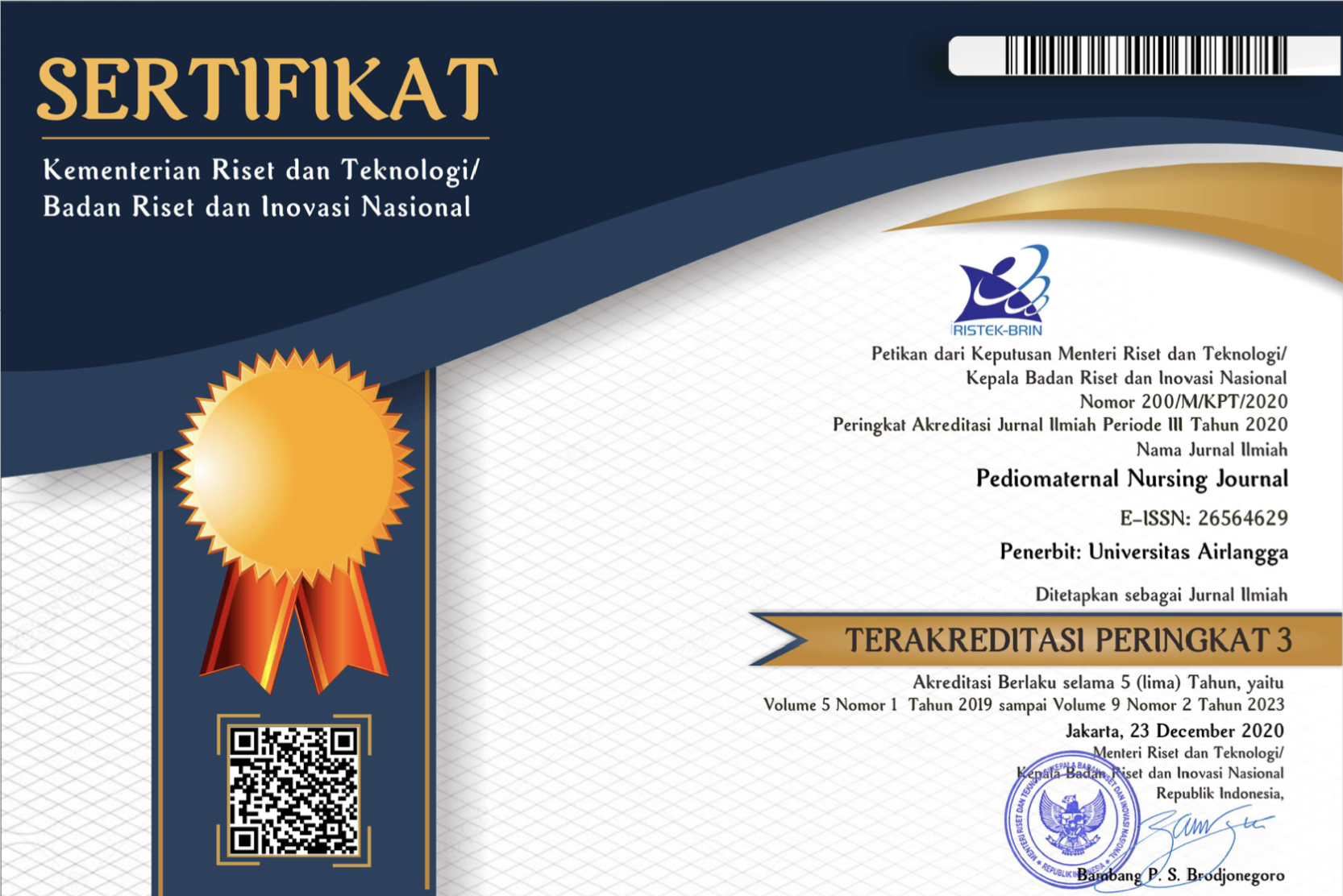Factors contributing to undernutrition among children under five years old

Downloads
Introduction: Basic Health Research in 2018 stated Jember as a district with the third highest incidence of undernutrition
in East Java. Undernutrition is a threat to future generations because it has short-term and long-term impacts that can
be irreversible. This study aimed to determine the factors associated with undernutrition among children under five in
Karangrejo Village, Jember Regency.
Methods: This research used a cross-sectional method involving 94 mothers and children under five years old registered
at Posyandu in Karangrejo Village who were selected by purposive sampling. The dependent variable included the
sociodemographic factors of mothers and children and was obtained using a demographic questionnaire. The dependent
variable, undernutrition, was determined based on weight-for-age and was obtained by plotting the child's weight on
the WHO weight-for-age curve: 0-5 years (z score) according to the child's sex. Statistical tests used ordinal logistic
regression tests.
Results: There are some factors contributing to undernutrition, including the father's education in elementary school
(p=0.002, OR=5.628), the number of children no more than two persons (p=0.038, OR=-2.546), a complete history of
immunization (p=0.011, OR=-4.627), history of infection of ARI every month and every two months (p =0.001, OR=
-3.897, -7.250) respectively, and the level of mother's knowledge about fulfilling children nutrition (p=0.000, OR= 5.593).
Conclusions: This study suggests that raising parent education, complete immunization, and mothers' knowledge are
recommended to prevent undernutrition among children. Furthermore, the outcome of this study re-emphasizes that
educational activities regarding children's nutritional needs are still needed to improve mothers' knowledge.
Keywords: children; contributing factors; undernutrition
Copyright (c) 2023 Lailil Fatkuriyah, Umi Sukowati

This work is licensed under a Creative Commons Attribution 4.0 International License.
1. The journal allows the author to hold the copyright of the article without restrictions.
2. The journal allows the author(s) to retain publishing rights without restrictions.
3. The legal formal aspect of journal publication accessibility refers to Creative Commons Attribution (CC BY).





















